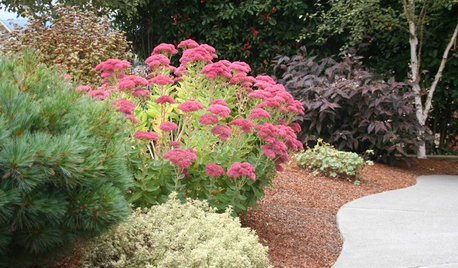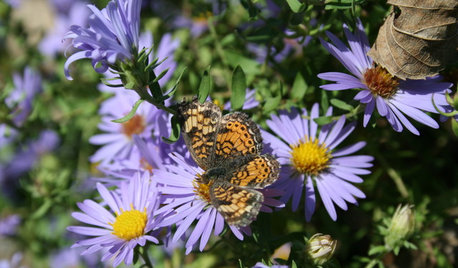Raspberry Supports
sboku74
12 years ago
Related Stories

GARDENING GUIDESPacific Northwest Gardener's August Checklist
Deadheading perennials, cutting raspberry canes and preparing for the onion harvest keeps Northwest gardeners busy in August
Full Story
HEALTHY HOME12 Ways to Set Up Your Kitchen for Healthy Eating
Making smart food choices is easier when your kitchen is part of your support team
Full Story
COLOR4 Cool Paint Colors Touted for 2014 — and How to Use Them
Muted but complex, these hues from Farrow & Ball can stand on their own or play supporting roles
Full Story
COLORFUL HOMESCase Study: The Fearless Approach to Bold Color
Bland has no place in this San Diego home. See how the designer uses vivid hues with cohesiveness and without overwhelming
Full Story
GARDENING GUIDESYes, You Can Grow Food in a Shady Yard
Your shady garden doesn’t have to be forever barren. Berries, herbs and other shade-loving plants can produce a delicious bounty
Full Story
GARDENING GUIDESBackyard Birds: Invite Entertaining Hummingbirds Into Your Garden
Hummingbirds — unique to the Americas — zip through open landscapes seasonally or year-round. Here’s how to attract them
Full Story

CURB APPEAL5 Bright Palettes for Front Doors
Splash bold green, blue, orange or red on your front door, then balance it with a more restrained hue on the rest of the house
Full Story
FEEL-GOOD HOMESimple Pleasures: Decorating Is Fun
You work hard enough. Why not indulge your playful side at home?
Full Story
COLOR PALETTESSet the Mood: 4 Colors for a Romantic Bedroom
Bring your love of color — and the colors of love — into your master bedroom
Full StoryMore Discussions








larry_gene
ahahaha
Related Professionals
Danbury Landscape Architects & Landscape Designers · Londonderry Landscape Architects & Landscape Designers · Oconomowoc Landscape Architects & Landscape Designers · South Elgin Landscape Architects & Landscape Designers · Middletown Landscape Contractors · Chattanooga Landscape Contractors · Dunwoody Landscape Contractors · Fishers Landscape Contractors · Ocoee Landscape Contractors · Weymouth Landscape Contractors · Ellicott City Fence Contractors · Folsom Fence Contractors · Natick Fence Contractors · Orange County Fence Contractors · Walnut Fence Contractorsdottyinduncan
garden.lover
bejoy2